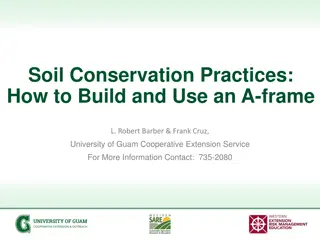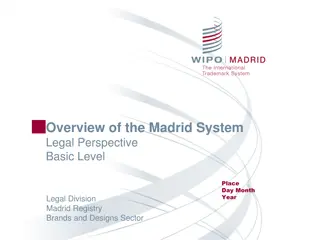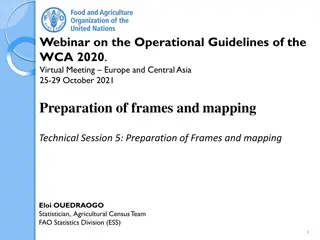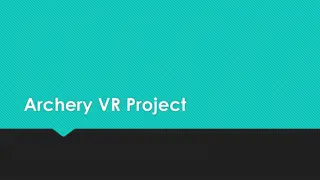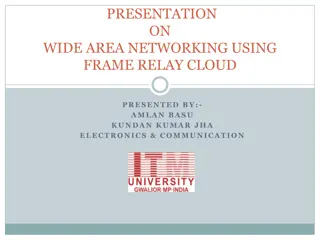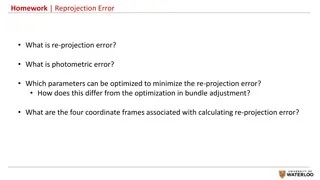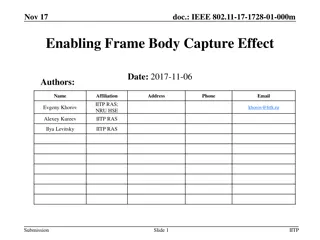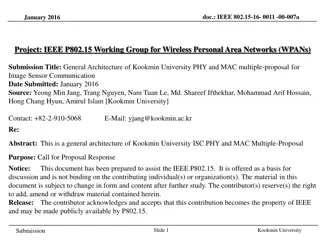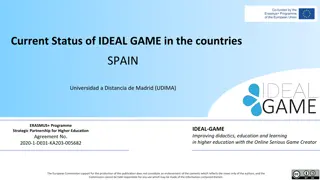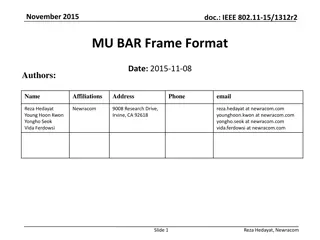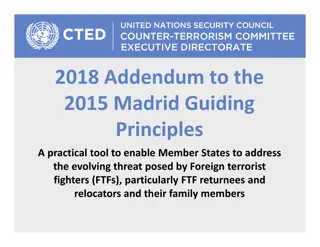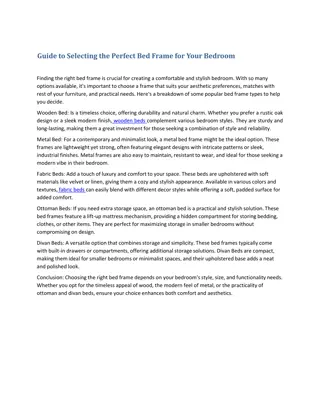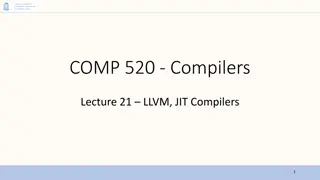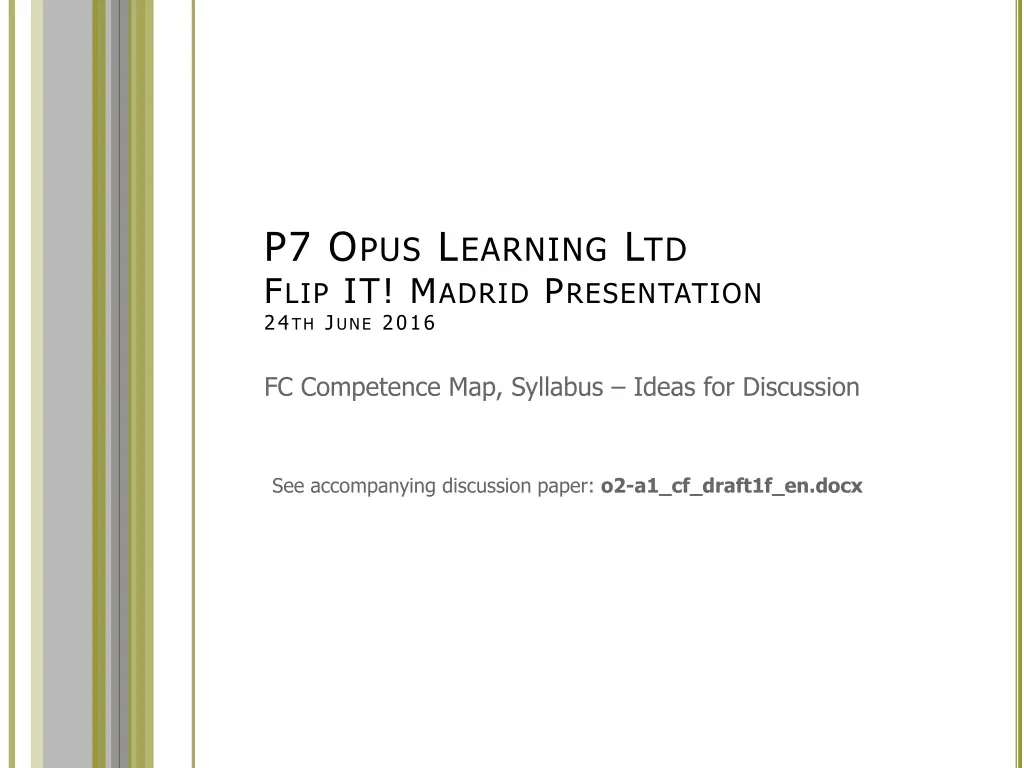
Innovative Competency Framework Structures
Explore different approaches and benefits of implementing simpler competency framework structures for effective training and learning. Learn about alternative hierarchy levels, skill sets, and specializations within competency frameworks. Enhance understanding and implementation of competency-based learning models.
Download Presentation

Please find below an Image/Link to download the presentation.
The content on the website is provided AS IS for your information and personal use only. It may not be sold, licensed, or shared on other websites without obtaining consent from the author. If you encounter any issues during the download, it is possible that the publisher has removed the file from their server.
You are allowed to download the files provided on this website for personal or commercial use, subject to the condition that they are used lawfully. All files are the property of their respective owners.
The content on the website is provided AS IS for your information and personal use only. It may not be sold, licensed, or shared on other websites without obtaining consent from the author.
E N D
Presentation Transcript
P7 OPUS LEARNING LTD FLIP IT! MADRID PRESENTATION 24TH JUNE 2016 FC Competence Map, Syllabus Ideas for Discussion See accompanying discussion paper: o2-a1_cf_draft1f_en.docx
THE FC SYLLABUS(A3)AND COMPETENCY FRAMEWORK(A1)... 1. is designed to be inextricably linked; 2. needs to be simple and easily understood; 3. needs to be tested before being developed into a full e-CF framework.
A COMPETENCY FRAMEWORK APPROACH EU E-CF but this is for IT, despite also being used by AAL. Microsoft example alternative three levels of hierarchy, but within a domain. Or for e-CF: Area, Competencies, Proficiency
Action: Pedagogy E-CF FRAMEWORK DETAIL Dim 1 Dimension 2 Competence PEDAGOGY Instructional strategies Mastering a pedagogic model, and applying to flipped learning Alternative teaching practices Help faculty change their teaching practices to favour more active learning strategies (e.g. PBL, Case Studies, Collaborative, Cooperative) Creating the Need to Know Guidance for students on why they watching/reading a specific text Active learning pedagogies Dimension 3 Level 1 Dimension 4 Knowledge Level 2 Level 3 Level 4 Level 5 Skills B B1 B2 Provides leadership for the change to innovative, alternation learning styles. Provides IS strategic direction for consensus and commitment from the institution K1. Alternative strategies K2. Relevance to the institution K3. Impact on teaching S1. Analyse alternatives S2. Determine requirements for adoption S3. Contribute to the strategic roll-out B3 B4 Providing opportunites for learners to think critically about content via a range of activities
ALTERNATIVE COMPETENCY FRAMEWORK STRUCTURE? What value has a simpler framework approach? three CF hierarchy levels: Specialisation; Skill and Competence; easier to relate to specific areas of training content and courses; easier to understand and relate to start with than the dimensions of the EU eCF? Can still relate to the e-CF and its full development.
SIMPLER COMPETENCY FRAMEWORK STRUCTURE Level Name Example Description MCDST Content Map 1 Environment Microsoft, Unix, Linux A competency framework set from a choice within an environment. 2 Competency Framework Set Microsoft Desktop Support Technician Each competency framework set will be subdivided into a number of competency frameworks. MCSE, MCSA, MCDBA 3 Competency Framework (or Skill Set) MCDST (1) Each competency framework has an associated skill set from which the user can select one or more specialisations against which to self-assess. Book MCDST (2) 4 Specialisation Installing Windows XP Installing and Managing Hardware Supporting Network Connectivity Specialisations are sub-divided into skills, which in turn are sub-divided into competencies. Chapter 5 Skill Installing Hardware in Windows XP Using Windows Troubleshooters Troubleshooting Network Connectivity Managing Disks Remotely Understanding Removable Storage Individual experience (No of months) is specified at the Skill Level. Competence, Ability and Expertise Points can be accumulated at the Skill Level. Competence Points give an overall view of capability in the Skill Ability Points are indicative of the spread of capability across the competences defining the skill Expertise Points reflect capability and experience. Lesson 6 Competence Understanding Plug and Play Devices Troubleshooting Networking Hardware End Users Level of Expertise Traits of a qualified DST Users assess competence at a rating of 0-3 against the lower level competence definitions. Sections within a Lesson
MAPPINGTO CONTENT Dimension 1 Areas can be directly mapped to the Learning Outcomes that would be the focus of the assessment of a course. These, in turn, should be the focus of the Learning Objectives of the course materials and course structure. This structure, then, can act as a guide for the development of a course and content.
EXAMPLE 1: DIRECT FC APPROACH Specialism Skill Competencies A. CONTENT A1. Designing activities A1.1. Exploiting learning opportunities A1.2. Creating learning plans A1.3. Incentivising and gamification A2. Higher order thinking skills A2.1. From knowledge to evaluation A2.2. Meeting cognitive demands A3. Reinforcing learning objectives A3.1. Matching activities to learning objectives A3.2. Integrated course design A3.3. Assessment Opportunities B. PEDAGOGY B1. Instructional strategies B1.1. Choosing suitable strategies B1.2. Re-inventing the lecture B1.3. Preparing students for societal roles B1.4. Aligning with competencies B2.1. Analyse alternatives B2. Alternative teaching practices B2.2. Determine requirements for adoption B2.3. Contribute to the strategic roll-out B3. Creating the Need to Know B3.1. Reasons for learning B3.2. Embedding in the content B3.3. Discovering meaning and relevance B4. Active learning pedagogies B4.1. Adopting and modifying active learning techniques B4.2. Explaining the learning benefits B4.3. Facilitating the processes B4.4. Control and coordination
EXAMPLE 2: EU E-CF ALIGNED PLAN; BUILD; OPERATE; ENABLE; MANAGE Specialism A.PLAN Skill A1. Instructional strategies Competencies A1.1. Choosing suitable strategies A1.2. Re-inventing the lecture A1.3. Preparing students for societal roles A1.4. Aligning with competencies A2.1. Analyse alternatives A2.2. Determine requirements for adoption A2.3. Contribute to the strategic roll-out A3.1. Reasons for learning A3.2. Embedding in the content A3.3. Discovering meaning and relevance A4.1. Adopting and modifying active learning techniques A4.2. Explaining the learning benefits A4.3. Facilitating the processes A4.4. Control and coordination B1.1. Exploiting learning opportunities B1.2. Creating learning plans B1.3. Incentivising and gamification B2.1. Relevance, engaging and interesting B2.2. Provide opportunity through different approaches B2.3. Provide the support need to reach goals A2. Alternative teaching practices A3. Creating the Need to Know A4. Active learning pedagogies B. BUILD B1. Designing activities B2. Content creation & presentation
CHECKINGWHETHERACOMPETENCYFRAMEWORKISFIT FORPURPOSE Communicate the purpose Do the target users of the CF understand what the purpose is. Identify key themes It still needs to support the organisation s aspirations (goals, values, business plans, and so on). Get conditions right The organisation s procedures, culture, resourcing and management structures are supportive too. Tackle the root causes Don t trying to improve behaviour without tackling the root causes. Keep it simple Two key elements to ease of use language and structure. If it s too complicated, long or detailed it won t be used. Train, don t blame Users must be trained how to use it, or it will fall into disuse or fail to meet its full potential. Source: UK CIPD
FLIP IT! DEVELOPMENT STAGES? 1. Develop and initial CF using simply Microsoft approach. 2. Derive the first Syllabus. 3. Produce the Course. 4. Run the Course. 5. Summarise Feedback. 6. [Optional step] Produce eCF version with full industry collaboration.


